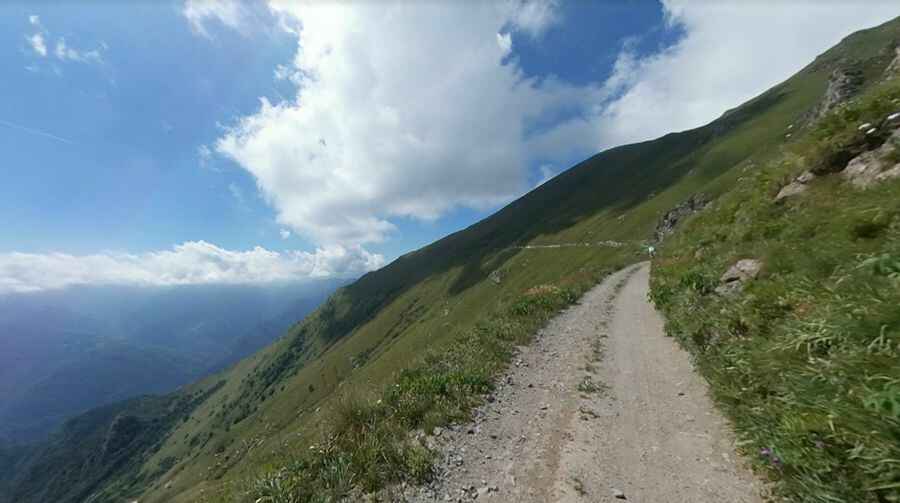Driving Strada dei Cannoni, a military high mountain road in Italy
Strada dei Cannoni is a military road located on the northern part of Italy. The road climbs up from 680m to 2.287m (7,503ft) above the sea level.

Is Strada dei Cannoni paved?
Set high in the Province of Cuneo on the northwestern part of the country, the road, also known as Varaita-Maira-Kammstraße, is mostly unpaved (75%). This course designed for military purposes today is a fascinating journey for lovers of nature. The road area is currently owned by the military property. Today it is recognized for its spectacular of its path, allowing you to follow the watershed between the valleys of Maira and Varaita enjoying magnificent views of mountain ranges and the head of the two valleys near the Monviso. The drive offers amazing views of the Maritime Alps and the Cottian Alps.
How long is Strada dei Cannoni?
Running across the watershed between Valle Maira and Valle Varaita, Strada dei Cannoni (Road of the Cannons) is 56km (34 miles) long and runs from Colletta di Rossana, in the territory of Busca, at 680m (2,230ft) above the sea level to Colle della Bicocca, in the Municipality of Elva, at 2.287m (7,503ft) above the sea level.
Is Strada dei Cannoni open?
According to several sources, from July to September, the road is closed on Saturdays, Sundays and public holidays from 9 to18 hours. At nights, the road is also closed from 21 night to 6 morning. In winters, the road is usually impassable due the snow.
Is Strada dei Cannoni challenging?
Unique, difficult and hardly frequented, the drive is a real off-road adventure for nerve-racking off-roaders. The little-used route is partly in very bad condition and should only be tackled by experienced off-roaders in good weather conditions. Coarse gravel, hairpin bends and some steep inclines require full attention along the entire route.
When was Strada dei Cannoni built?
This ancient road was remodeled in the thirties of the last century, tracing a previous itinerary built by the engineers of the Piedmontese army in 1744, to stem the advance of the Franco-Spanish. It was built by Carlo Emanuele III during the war of succession of Austria in 1744, in order to pass with the troops over the Alps in a faster and safer way. The route started from Casteldelfino in Varaita valley, to the hill of Sampeyre, descended to Stroppo, dating back to Marmora through the Colle Colle dell'Encucetta until the Mule. Hence reached the Valley of the Force in Demonte and Barricades Pietraporzio in Stura Valley and the plane of Gardetta. The road, however, was never used in a battle because there was fighting around the town of Cuneo. The upper part became civilian use, while the stretch of crossing the river Maira Stroppo went disappearing with the construction of new roadways. This part also included a portion of a trail built by Napoleon's army, took the name of "Route Napoleon" because of the legend that supported the passage of the emperor on it. Today this track has almost disappeared, the name of the street instead of the guns is associated with the carriageway which was built in 1893 by the Army Corps of Engineers on the ridge between the Valle Maira and Varaita Valley and extending from Colletta di Rossana far as Col Bicocca between the basin of Elva and the valley of Bellino. The first extraordinary maintenance intervention dates back to 1938, when the Engineering Department of Cuneo received the order to adapt the existing mule track to motorized transit from Colletta di Busca to Colle della Bicocca. Initially, the orientation was to reduce costs to a minimum, carrying out only excavations to widen the road, later it was decided to transform the road into a "type C" road. The works were contracted out by the Sorge company for an amount of 780,000 lire with the use of military manpower to supplement the civilian one. Work was completed in 1941. In 2014, a two-kilometre stretch was paved which connects the provincial roads of Lemma and Valmala (now belonging to the Busca area), creating an ideal loop, among other things, for cycling routes. Along the path are many obsolete military barracks.
Pic: Renato Cane